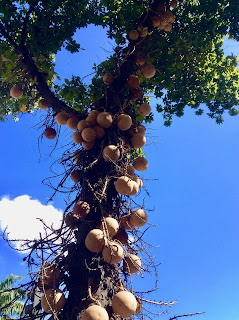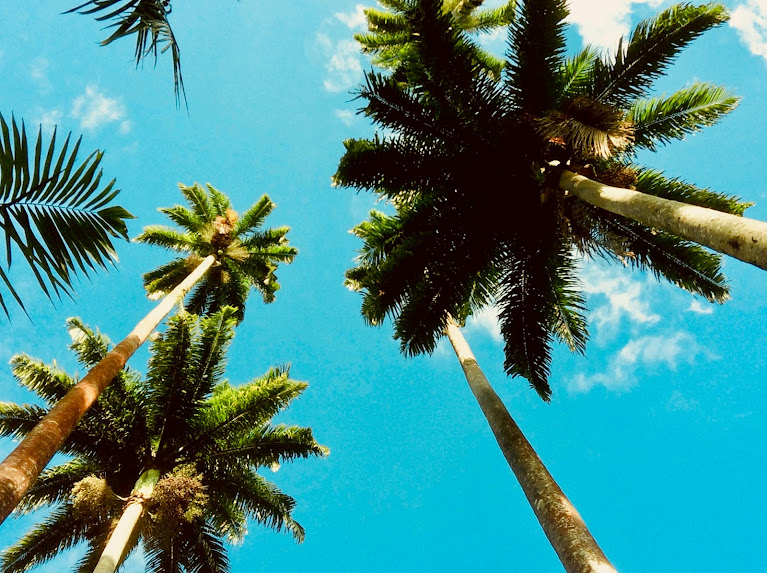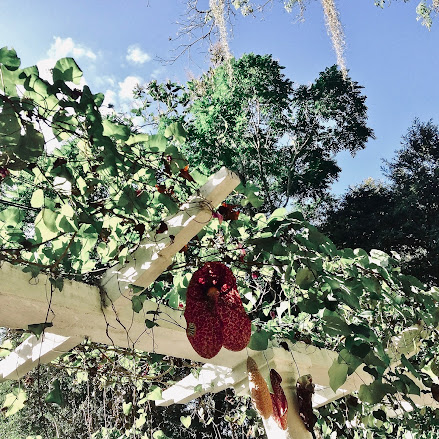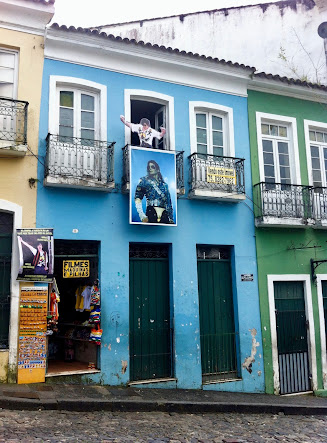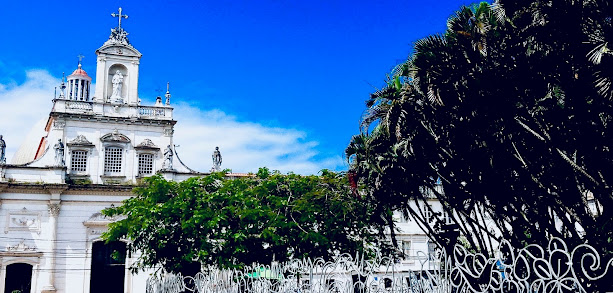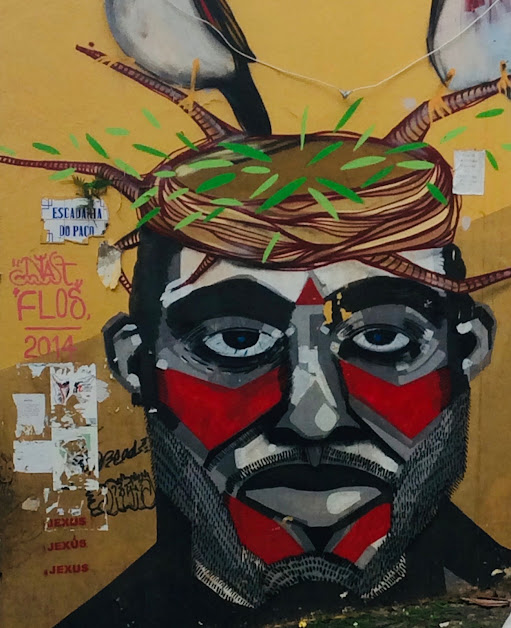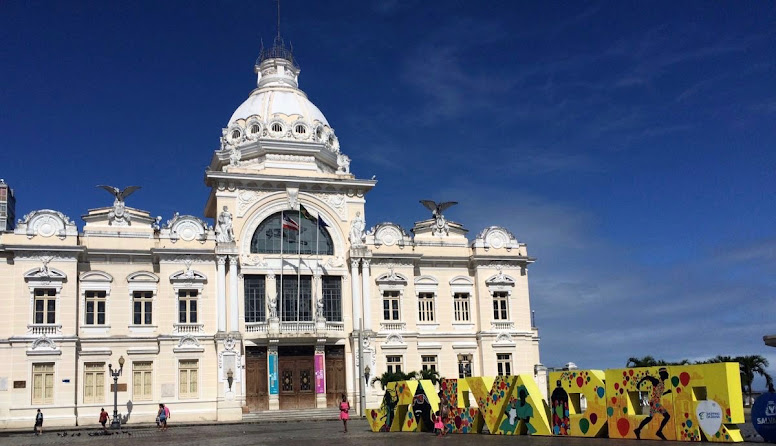I flew to
later, in the afternoon we climbed part of sugarloaf mountain spotting some cute animals on our journey and then got the cable car to the top (Pão de Açúcar) and later to the Jesus (Christ the Redeemer / Cristo Redento), the colossal statue of Jesus Christ at the summit of Mount Corcovado with outstretched arms embracing the city
built in the early 20th century, and inspired by the Paris Opera of Charles Garnier, its interior is even more ornate and luxurious than the dramatic towered façade.(though we didn't get to see as we didnt entrust passed it on the tour) it contains sculptures by Henrique Bernardelli and paintings by Rodolfo Amoedo and Eliseu Visconti, the drop curtain, the proscenium frieze, and the ceilings are also worth seeing.
Santa Tereza church established 1720 and Escadaria Selarón
From 1990 until his death in 2013, Chilean-born artist Jorge Selarón covered these long flight of steps in front of his house with mosaics made of tiles, pottery, and mirrors. (many in blue, green, and yellow - colors of the Brazilian flag.) He began by using broken tiles from construction sites and demolitions of old buildings, as his steps drew the attention of tourists, people began bringing him pottery and tiles from all over the world.There are pieces from more than 60 countries within these 250 steps, which cover 125 meters of stairs.
AQUADUCT
Catedral de São Sebastião

Jardim Botanic
Botanic Garden in Rio de Janeiro was founded more than 200 years ago (in 1808)。 open 9am - 6pm 15R entrance fee. I went in the afternoon on a weekday and it was pretty quiet, its quite big and really nice for a pleasant stroll with lots of plant life, flowers, monkeys, insects and bird too. The Christ statue can be seen too in the background. definitely worth a visit if you have the time!
dating back to the 17th century when an old pulley system was put in place here to help move objects from the Lower City to the Upper City.
The art-deco elevator that is standing today was built in the 19th century. It has many improvements through the years, and it can now up to 32 people in each elevator for a 30 seconds trip!
São Francisco Church
Salvador, the capital of Brazil’s northeastern state of Bahia, is known for its Portuguese colonial architecture, Afro-Brazilian culture and a tropical coastline. its historical quarter up on the hils is full of cobblestone alleys opening onto large squares, colorful buildings and baroque churches such as São Francisco, and looks down over the bay. the city is nearly 500 years old (found 1549) and was the former Portuguese colonial capital of Brazil.
Pelourinho
Now a UNESCO World Heritage Site together with the historic city center because Salvador is notable as one of the major points of convergence of European, African, and American Indian cultures of the 16th-18th centuries.
The local guide leads you through the streets of downtown and Pelourinho explaining these places’ culture, history, and role in the African slave trade. many of the women even wear their traditional dresses
Baiana de Acarajé traditional dress is a blend of European Baroque (white lace details & multiple layers) with vibrant tropical jewellery and headdress's (Afro-Islamic roots) maybe not the most practical clothes for Bahia’s climate, but it's an impressive look. The dress consists of the camino, which are white cotton pants worn underneath a long, flowing skirt – a usually white, long, voluminous skirt and a bodice that gathers at the waist and then typically hangs over the top of the skirt. The women wear layered headscarves (also usually white and often made of lace), which is finished off with each woman adding her own signature style to the outfit. An abundance of jewelry: colorful bead necklaces and rings are layered upon the fabric, completed with heavy drop earrings and stacks of bangles - beautiful adornment
built 18th century. lots of people have ribbons tied around their wrists. These ribbons are called wish ribbons which initially started with the Senhor do Bonfim Church.
the House of Jorge Amado Foundation
Pierre Verger Foundation
the lower part of the town is more run down and neglected, forlorn and forgotten with only traces of its previous beauty and richness remaining.
Salvador has a forlorn lost beauty to it. lots of old stately buildings dirty, abandoned and in disarray, a poor facade remains of its once luxurious grandeur
A costal city, you can visit the beach or check out the port, you can even do boat trips to other islands.
Church and Convent of Our Lady of Mount Carmel.
The Church of Our Lady of the Rosary of the Black People

The easiest way is to take a ferry or catamaran from the Mercado Modelo in Salvador to Morro de São Paulo. The ferry costs R$ 75 and the catamaran R$ 80 and they take approximately two hours. Since you are travelling on the open ocean, seasickness pills are advised. Tickets can be bought at the boat terminal building. It's best to not travel on a full stomach, better if empty or have a least waited an hour or two before travelling as its very choppy. you can take the "speed boat" or local boat. we took the speed boat over - it's a little dearer but has less people and a little more comfortable though people still got seasick. We took the normal boat back, sitting underneath. there were several people lying down on the benches and throwing up into the bags provided. not so fun.



































